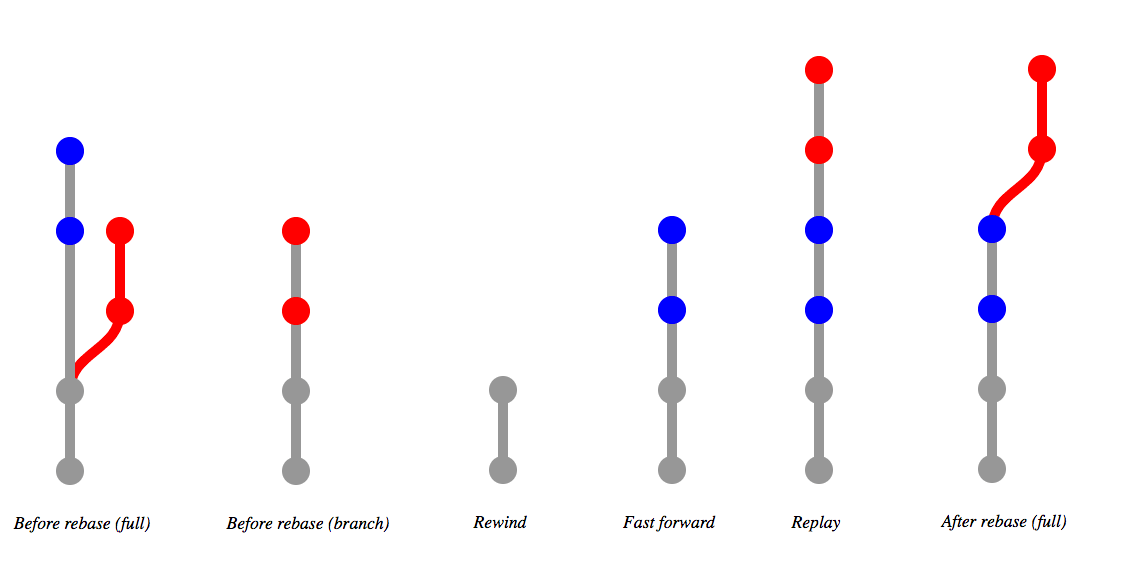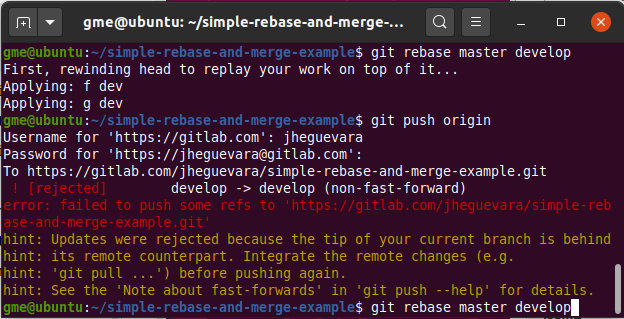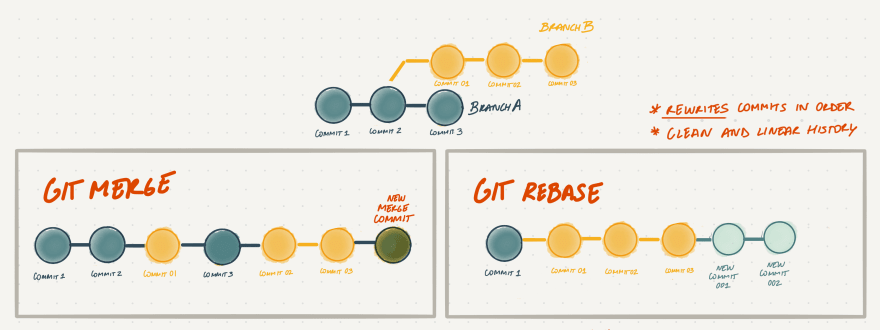

From the master branch perspective, each commit on the branch is a complete implementation of one feature. Now, the entire implementation of your feature is contained in one commit. If the commit log above was your “before,” this is your “after:” c27766b (HEAD -> issue-1) Implement feature XYZ 4cb7063 (master) Initial commit It’s like handing in a term paper to your teacher with all of your notes and rough drafts stapled to it.īy squashing your commits, you keep your end result but get rid of the extraneous commits. Merging a history like the one above into master results in a lot of non-valuable noise.
#Rebase to master git code#
Put another way, nobody cares about what it took for you to get your code working, they just want your finished product. The consumers of your code (i.e., other developers on the project) are interested in your working code, not the fact that it took you 35 commits to get your code to a working state. In other words, each branch should only contain commits relevant to the implementation of a single feature (or bug fix). But those small, incremental changes are only meaningful in the context of the branch you’re developing on. It’s a good practice to commit often so that you can roll back changes in small increments if needed. In some cases that’s desirable, but what if your branch has a lot of commits that contain minor fixes? You could end up with a commit history that looks like this: 4d7269c (HEAD -> issue-1) added missing semicolon, lol ae37a28 my code is broken 30cd73d syntax error ugh cf5ff68 syntax error2 44962e5 syntax error 26a6423 Broke linter 2a9a75d Fix issue in method 7d0be0e Get tests passing bd23847 Add some more code 8f34218 Implement feature XYZ 4cb7063 (master) Initial commitĪnd that’s not the most egregious example of meaningless commit histories I’ve seen!

If you have many commits in your branch and merge your branch into master, all of these commits will end up in master (possibly with a merge commit). There are several reasons you might want to do this. An interactive rebase operation allows you to squash your commits, combining many commits into fewer, or even one singular commit. The end result is a linear commit history on the master branch, which makes it easier to see how the code evolved. It does, however, offer some advantages, including a way to cleanly incorporate new code into a feature branch and a way to keep meaningless commit history out of a repository’s master branch. It literally rewrites Git commit history, which is a big no-no in most cases. (Another command is merge.) Rebase can be a very destructive operation. Rebase is one of several Git commands that integrates changes from one branch onto another. Once you’re confident with this workflow, Git will fade into the background, allowing you to focus on what’s important: the code. This workflow certainly isn’t the only way to use Git, but its prescriptive nature allows you to spend more time on actual work and less time fiddling with Git. This article started as a guide for my team. Git provides a tremendous amount of freedom and little guidance, so developers and teams often have to define their own best practices. This workflow scales well from a single developer up to a large team and has been successfully used on multiple projects for a variety of clients. In this guide, I’ll explain a Git workflow using the oft-ignored rebase feature that addresses these problems. Some people get to the point where they delete their repository and reclone as a last-ditch effort to fix their Git woes. Even worse is that this mess is self-perpetuating.

The result is always a lot of wasted time, an indecipherable log of what actually happened in the repository, and very little confidence that the resulting codebase contains the changes it should. I’ve seen many teams turn their repository into a tangled mess as they struggle with Git.

Git can be tricky to use, especially in a team setting where stale branches and merge conflicts tend to cause problems when you least have time for them.


 0 kommentar(er)
0 kommentar(er)
